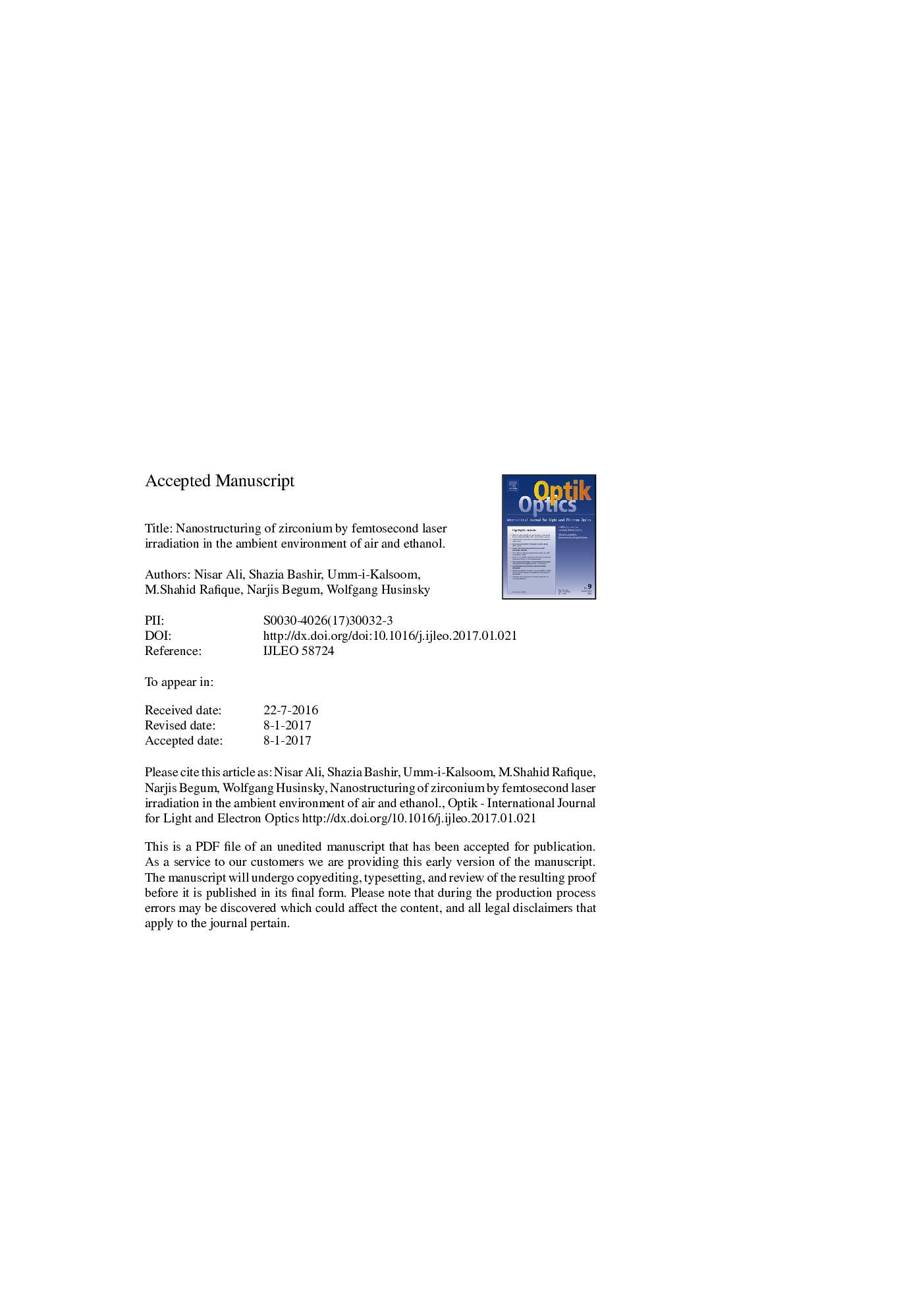| Article ID | Journal | Published Year | Pages | File Type |
|---|---|---|---|---|
| 5026238 | Optik - International Journal for Light and Electron Optics | 2017 | 32 Pages |
Abstract
The formation of nanoscale structures, variation in structural and mechanical properties of zirconium has been investigated. For this purpose Ti: sapphire laser (800Â nm, 30Â fs, 1Â kHz) was employed for varying number of laser pulses ranging from 500 to 2000, at a fluence of 3.6Â J/cm2 in ambient environments of air and ethanol. The surface morphology of irradiated zirconium samples was investigated by using Scanning Electron Microscope (SEM). SEM analysis shows the formation of various features including nanoscale Laser Induced Periodic Surface Structures (LIPSS), conical structures, droplets, pores and cavities. Relatively fine LIPSS with significantly less periodicity are formed in liquid environment because of the confinement effects of liquid. EDS analysis exhibits variation in chemical composition along with enhanced diffusion of oxygen under both ambient conditions. The crystal structure and phase analysis of the exposed targets were explored by X-ray Diffraction (XRD) and Raman spectroscopy techniques, respectively. XRD analysis confirms presence of various phases of oxides of zirconium after ablation in both air and ethanol. Raman analysis supports the EDS and XRD results. It also reveals the presence of oxides after irradiation in both air and ethanol environments. Convective motion of bubbles and pressure gradient because of confinement effects of liquid accompanied with creation of oxides is attributable for the development of nanoscale structures. Nanohardness measurement shows an increase in nanohardness with increase in number of laser pulses after irradiation in air ambient whereas, in case of ethanol decrease in nanohardness is observed.
Keywords
Related Topics
Physical Sciences and Engineering
Engineering
Engineering (General)
Authors
Nisar Ali, Shazia Bashir, Umm-i-Kalsoom Umm-i-Kalsoom, M. Shahid Rafique, Narjis Begum, Wolfgang Husinsky,
